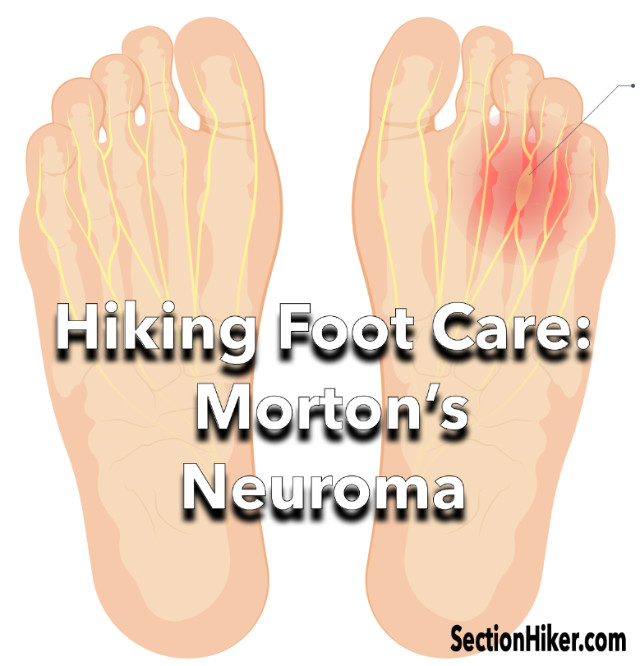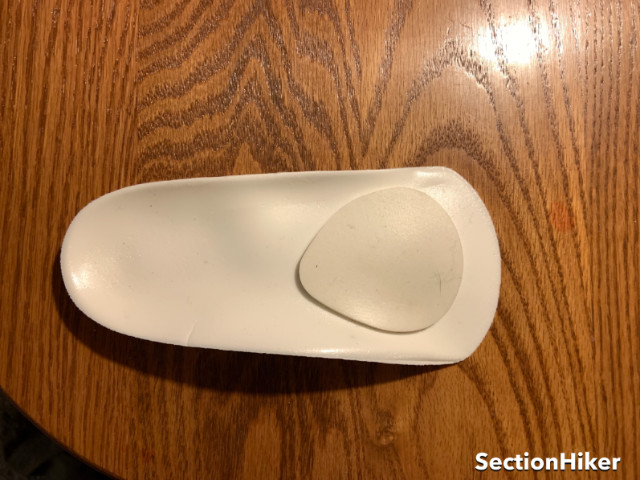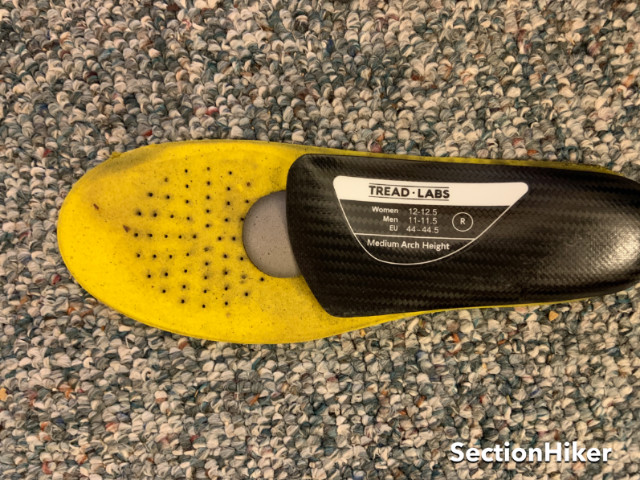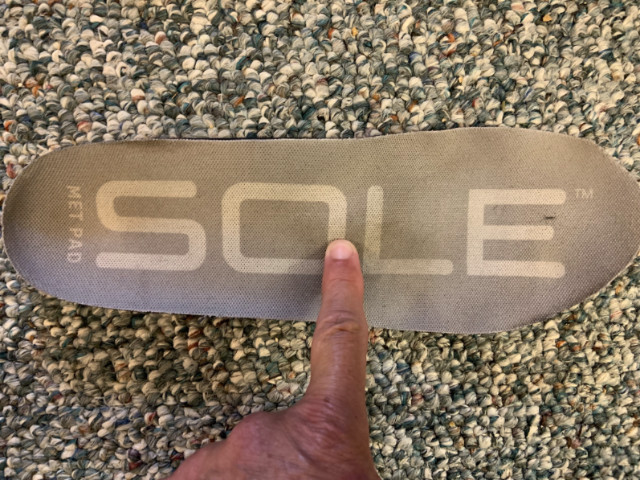
Morton’s Neuroma is an inflammation of the nerves leading to your small toes and presents itself as a burning or tingling sensation or the feeling that your sock is bunched up in the front of your shoes, even when it isn’t. Once inflamed, Morton’s Neuroma won’t away without proper care and may become painful enough to keep you from hiking. The Cleveland Clinic estimates that one in three people suffer from Morton’s Neuroma, so it’s pretty widespread, but often goes untreated because people don’t realize that they have it or where to go to seek treatment.
If you have one of the aforementioned symptoms and suspect you have Morton’s Neuroma, you can perform a simple test to check. Called Mulder’s Test, it’s used by foot doctors (podiatrists) to diagnose Morton’s Neuroma ailment. I performed this tent on myself and when I heard my foot click, I knew it was time to schedule a Podiatrist appointment.
Causes
There are a number of factors that can contribute to getting Morton’s Neuroma. It can be caused by repeated stress to the foot, wearing tight poor-fitting shoes or high heels, or inherited foot deformities. Wearing hiking shoes with a wide toe box like Altra Running Shoes can help prevent Morton’s Neuroma if you start young enough and you have good genes, but switching to them after a neuroma has formed won’t make it go away.
Treatment
In extreme cases, you can have a neuroma surgically removed, but that’s an option you probably want to avoid. But if you catch it early enough, you can reduce the inflammation with podiatrist-prescribed anti-inflammatories since over-the-counter varieties like Advil and Alleve aren’t strong enough. In more advanced cases, cortisone shots can also provide relief.
Insoles
In addition to medication, it’s important to use a shoe insole that takes the pressure off the afflicted area between the 3rd and 4th toe so you don’t keep stressing it. This is achieved by using an insole with a metatarsal pad, which your podiatrist is likely to give you. The metatarsal pad is positioned behind the ball of your foot relieving pressure on your metatarsal bones and toes when you walk.

But the problem with these podiatrist-prescribed metatarsal pads is that they are attached to the top of a foam insole with an adhesive that is quickly torn off by friction or moisture. Sourced from medical supply companies, they are intended for casual everyday use and aren’t robust enough to stand up to the rigors of serious hiking. I’ve been through this first-hand.
What you want is an insole for hiking boots, mids, hiking shoes, or trail runners that has good arch support and a metatarsal pad. It’s important that the insole’s arch can survive the impact of hiking without collapsing and that the sole won’t break down if it gets wet. In addition, you want a metatarsal pad that is fully integrated into the insole or located underneath so it isn’t dislodged by the movement of your foot inside your shoes. These requirements eliminate a lot of products

But, I’ve had good luck with two insoles that meet these criteria including:
Both of these insoles can take the punishment of hiking, they can get wet, and then dry without being affected or ruined. I use the Treadlabs insoles with met pads in my hiking trail runners and winter boots, and SOLE insoles with met pads in my cross-country ski boots and fishing boots.

The important thing to keep in mind is that these insoles will create an environment in any shoe that will give your neuroma time to “settle down” and income less inflamed. You can try many different new shoes to get the same effect, although I doubt you’ll have any success: instead, having a properly configured set of insoles and a strong anti-inflammatory prescription will be the quickest and most efficient way to reduce your discomfort.
Wrap Up
If you suspect you have Morton’s Neuroma, make a podiatrist appointment for a check-up. It really is the most expeditious way to deal with Morton’s Neuroma so you can keep on hiking without pain or discomfort. It’s hard to believe that I put up with it for as long as I did, but I really didn’t know any better at the time.
See Also:
SectionHiker is reader-supported. We independently research, test, and rate the best products. We only make money if you purchase a product through our affiliate links. Help us continue to test and write unsponsored and independent gear reviews, beginner FAQs, and free hiking guides.
